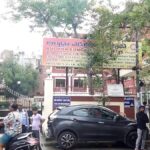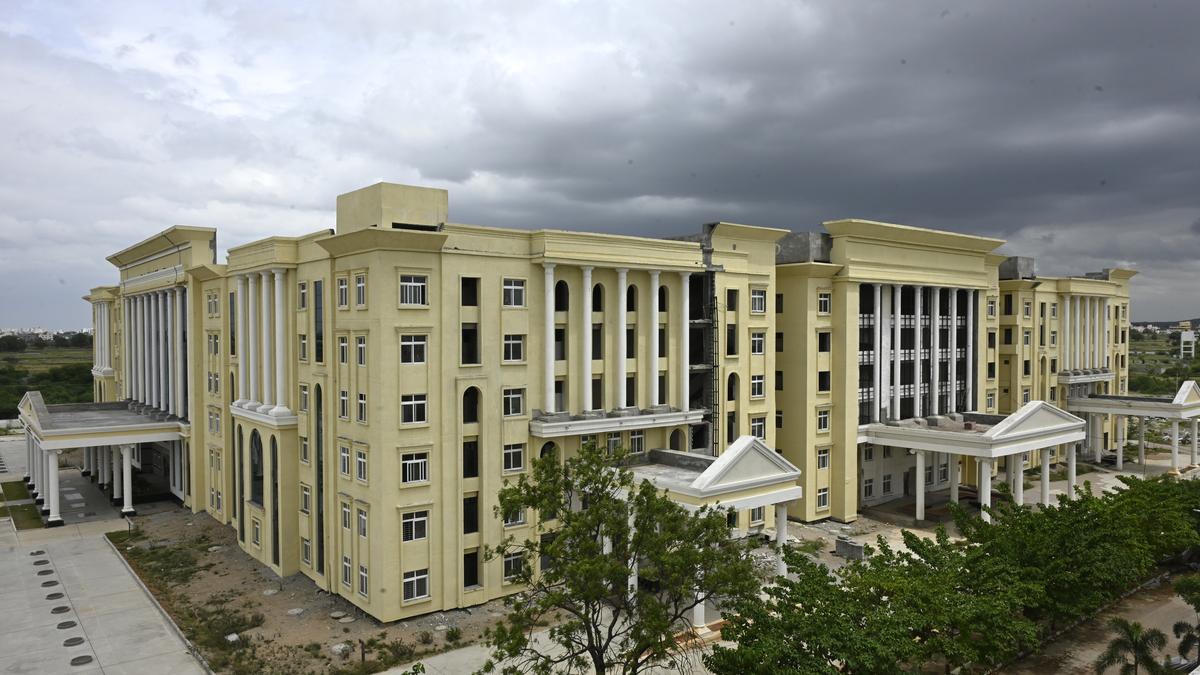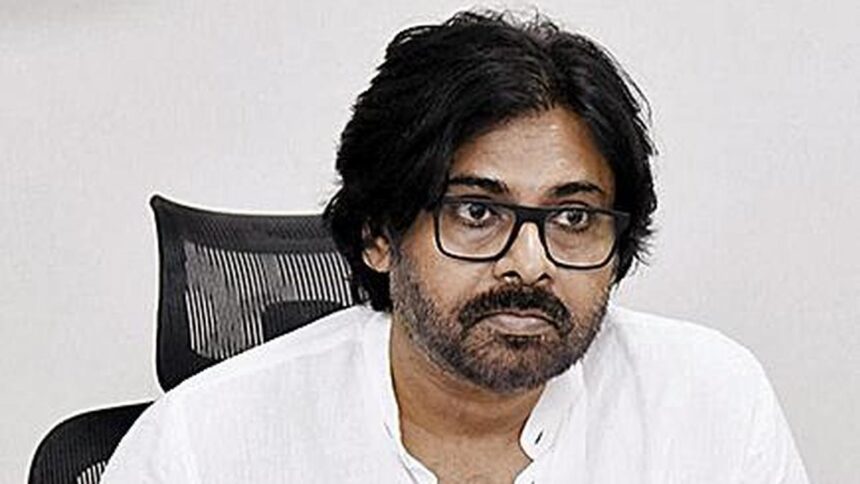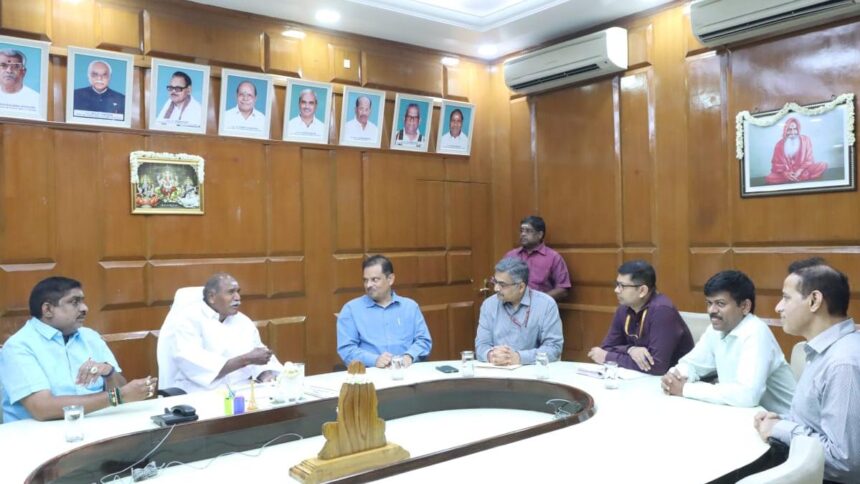On the otherwise quiet stretch of Road Number 4 in Telangana’s Siddipet district, about 100 kilometres north of Hyderabad, one building stands out — not for its design, but for the activity it draws. Rickshaws, hatchbacks, private cars and ambulances are parked in a haphazard line along the narrow tar road. With little room for four-wheelers inside, the road outside becomes a makeshift parking lot for those visiting the Government General Hospital, Siddipet.
Step past the entrance and a rectangular lobby opens up. To the left, a queue snakes around the Outpatient Registration counter. To the right, rows of plastic chairs are packed with patients and attendants — women in saris fanning themselves, elderly men on walking sticks, young parents cradling toddlers. Though outpatient hours run from 9.30 a.m. to 2 p.m., the hallway is full by 11 a.m.
Adding a splash of colour to this scene is a strip of Cherial painting across the top of the hospital walls — vivid red panels telling traditional tales, a nod to Telangana’s folk art legacy. It is an oddly comforting juxtaposition: cultural flourish amid clinical fatigue.
Down the corridor is the duty doctor’s room — a modest 15×8 feet, with two foldable metal beds lining opposite walls. What catches the eye isn’t the squeeze, but the far wall, or the lack of it. In its place is a large corrugated metal shutter, the kind one would see fronting a kirana shop. Only two brick pillars frame it; a white ceramic washbasin clings to one side.
Perched on a metal bed is a young doctor, white coat on, stethoscope around her neck. She speaks in a calm, practiced voice about juggling medical education with long government hospital shifts, her words painting a picture of exhaustion, resilience, and a system stretched thin.
“Though it is now a teaching hospital, Siddipet still runs on the infrastructure of its old identity: an area hospital with 780 beds. There is no space to add more. That is why a new 1,000-bed hospital was built nearby. But that is stuck in limbo — political disputes, budget delays, commissions. The building is ready, but has not been handed over,” she says.
She gestures towards what lies just five kilometres away — a gleaming new hospital building inaugurated with much fanfare by Siddipet MLA and former Health Minister T. Harish Rao in October 2023. Built adjacent to the Government Medical College, the new Government General Hospital is a sprawling, palace-like structure, strikingly similar to a high-end corporate hospital. But behind the glossy facade lies silence. One and a half years since its inauguration, the building remains non-functional, caught in bureaucratic limbo.
When the first batch of medical students enrolled in 2018, they were promised an integrated campus: hospital, hostels and college, all in one place. That vision remains unrealised. What has arrived instead is a faculty crisis too big to ignore.
“In some departments, there are 12 to 15 postgraduate students and only three faculty members — one professor and two assistant professors. So PGs end up doing everything: teaching, ward rounds, you name it. Recruitment has not happened. The Directorate of Medical Education keeps saying notifications will be issued, but they never do,” the doctor says.
She also points to a persistent safety concern — commuting after night duty. “The road to the college becomes eerie after dark. It is so unsafe that we have to ask the boys to escort us. There have been cases of women doctors being followed. It is frightening,” she says.
But this is not unique to Siddipet.
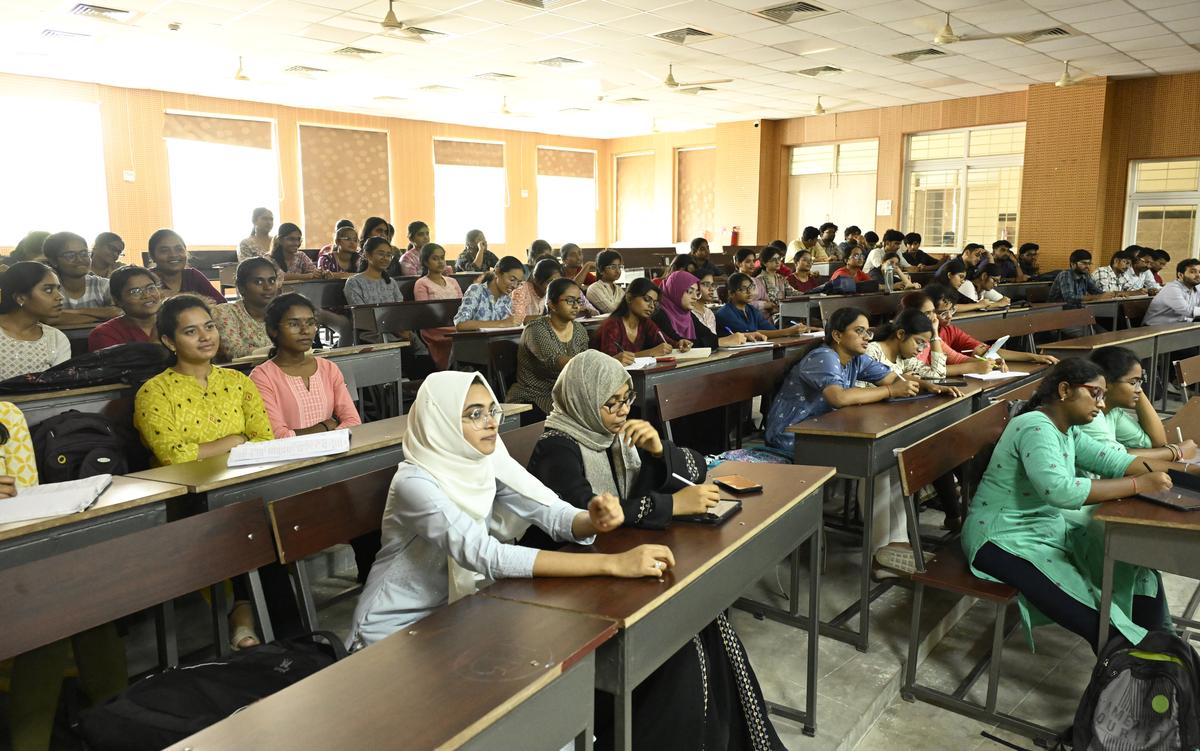
MBBS students attending a class at Government Medical College, Siddipet.
| Photo Credit:
RAMAKRISHNA G.
Across Telangana’s 34 government medical colleges, the same problems recur. Before 2014, the State had just five government-run medical colleges. Over the last decade, the Bharat Rashtra Samithi government pushed to open one in every district. By 2024, as many as 29 new colleges had come up as part of that ambitious expansion.
But the growth has been lopsided.
“The rapid establishment of so many government medical colleges (GMCs) has resulted in impressive buildings that resemble fully functioning medical institutions. But inside, there are serious gaps — faculty shortage, insufficient clinical exposure and other systemic deficiencies,” says a senior official from the State Health department.
A system under strain
At GMC Karimnagar, a second-year student sums up the classroom situation bluntly: “There is not enough space to sit. Two batches share one lecture hall; some of us stand or sit on the floor. The hostel is no better. It is overcrowded and temporary. We are still waiting for the promised building.”
Over at GMC-Nalgonda, transportation is the biggest hurdle. “The hospital is seven kilometres away, but there are no dedicated buses. Our principal sent a request to the Director of Medical Education and even to our MLA, Komatireddy Venkat Reddy, who is also a minister. He promised two to four buses, but not a single one has arrived,” a student says.
At GMC-Asifabad, the problems cut deeper. “We don’t have MBBS-qualified faculty. Our labs don’t function. We are expected to learn without tools, without guidance,” says a first-year student.
Things are no better in Bhadradri Kothagudem, where a post-graduate student shares, “Departments like Anatomy and Biochemistry are run by non-MBBS staff. That is a direct violation of National Medical Commission (NMC) norms. We have raised complaints but nothing has changed.”
Most students here live in rented flats, often cramped and unhygienic.
At Rajiv Gandhi Institute of Medical Sciences-Adilabad, the situation is downright bleak. “We stay in quarter clusters with no clean water, no streetlights. The mess food is inedible, the quarters stink, and there is no CCTV cameras or security. We are working 12-hour shifts and studying through the night in such conditions,” says a first-year PG student.
At GMC-Narayanpet, the daily commute is a risk in itself. “We lost our college bus last year. Now we travel eight kilometres at our own expense. Many of us live in distant, unsafe hostels. After 7 p.m., the road turns pitch dark. There is no fencing, no security,” says a junior doctor.
The conditions are equally grim at GMC Jangaon too. “We girls are put up in an old-age home. The boys are crammed into tiny rooms. There are no labs, no gym, no sports, nothing. And we are charged ₹1,000 a month for transport,” says a student.
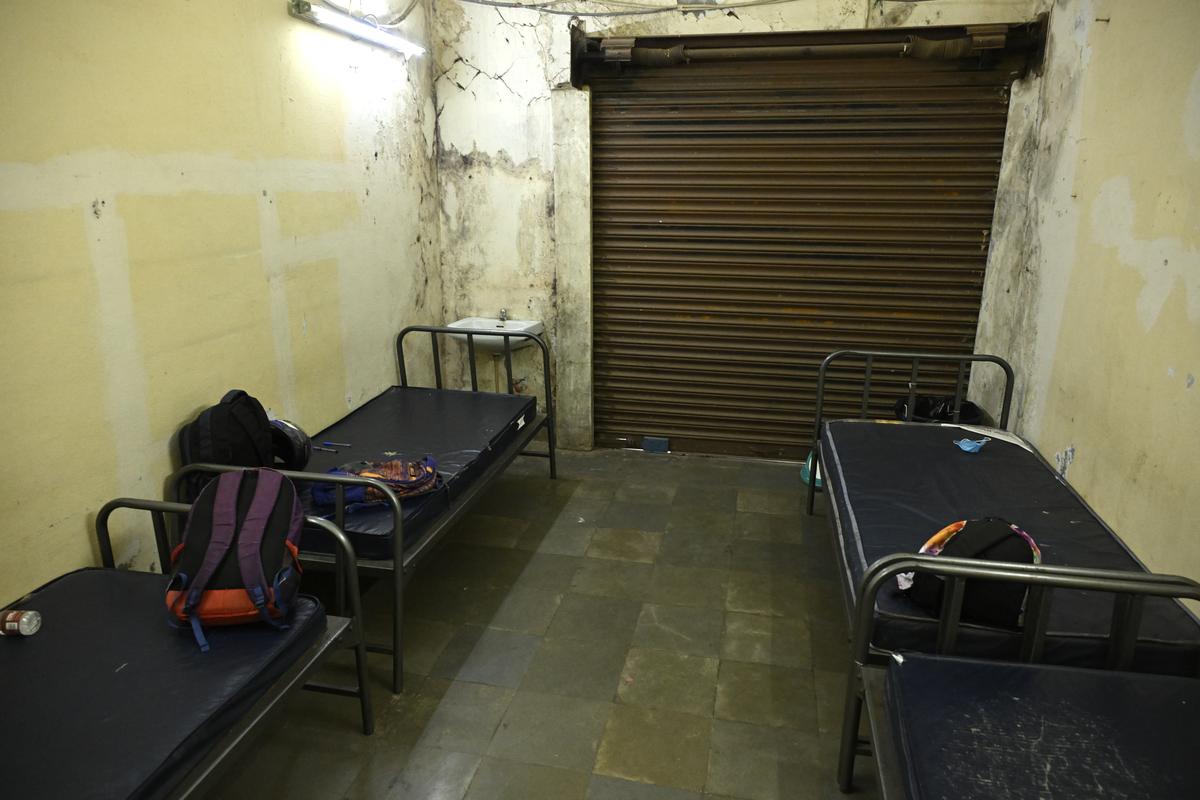
The duty doctor room at Government General Hospital, Siddipet, having a large corrugated metal shutter in place of a wall.
| Photo Credit:
RAMAKRISHNA G.
In Maheshwaram, students attend classes on borrowed premises. “There are no proper labs. We do physiology practicals in lecture rooms. The subsidised hostels they promised never came. We are paying ₹7,000 a month in rent for rooms infested with cockroaches and spiders,” a student shares.
At GMC-Kamareddy, the gap between college and hospital — just 3.5 kilometres — is a daily hurdle. “With no transport, we often miss clinical postings. Some of us even skip meals just to save time,” a student says.
Even at established institutions like Gandhi Medical College, cracks are showing. “We have only one assistant professor each in Radiology and Microbiology. Everything else is handled by postgraduates. Forget learning, we are barely surviving,” says a student. The infrastructure hasn’t kept pace either. “The elevators are constantly breaking down. There are water shortages, outdated pipelines and stray dogs keep biting students. This is not a campus, it is a battlefield.”
Promises deferred
From broken hostels and pitch-dark roads to missing faculty and absent labs, the accounts echo a common story: of systemic neglect wrapped in glossy expansion.
A postgraduate student from Vikarabad puts it plainly: “We are the face of public healthcare. But we are studying in the shadows of unfinished buildings, of missing mentors, of apathy.”
Telangana’s 34 government medical colleges collectively offer 4,140 MBBS seats. The top three — Gandhi, Osmania, and Kakatiya Medical Colleges — have the highest intake at 250 seats each. The rest range between 50 and 175. In early June, the National Medical Commission issued show-cause notices to 26 of them, citing critical shortfalls in infrastructure, clinical material and faculty.
A vacancy list accessed by The Hindu, released by the Directorate of Medical Education in July 2024, lays bare the extent of the staffing crisis in Telangana’s government medical colleges and teaching hospitals.
Of the 3,143 sanctioned Assistant Professor posts, only 1,399 have been filled — leaving 1,736 positions vacant. The shortage extends to professors as well, a senior doctor confirms.
“These gaps would not exist if the State government had a consistent, calendar-based recruitment process,” says a doctor working as a contract Assistant Professor at a government medical college. “Even under contractual appointments, our salaries have not been paid this year because the contract itself has not been renewed. And this isn’t just about Assistant Professors — it affects faculty across all levels.”
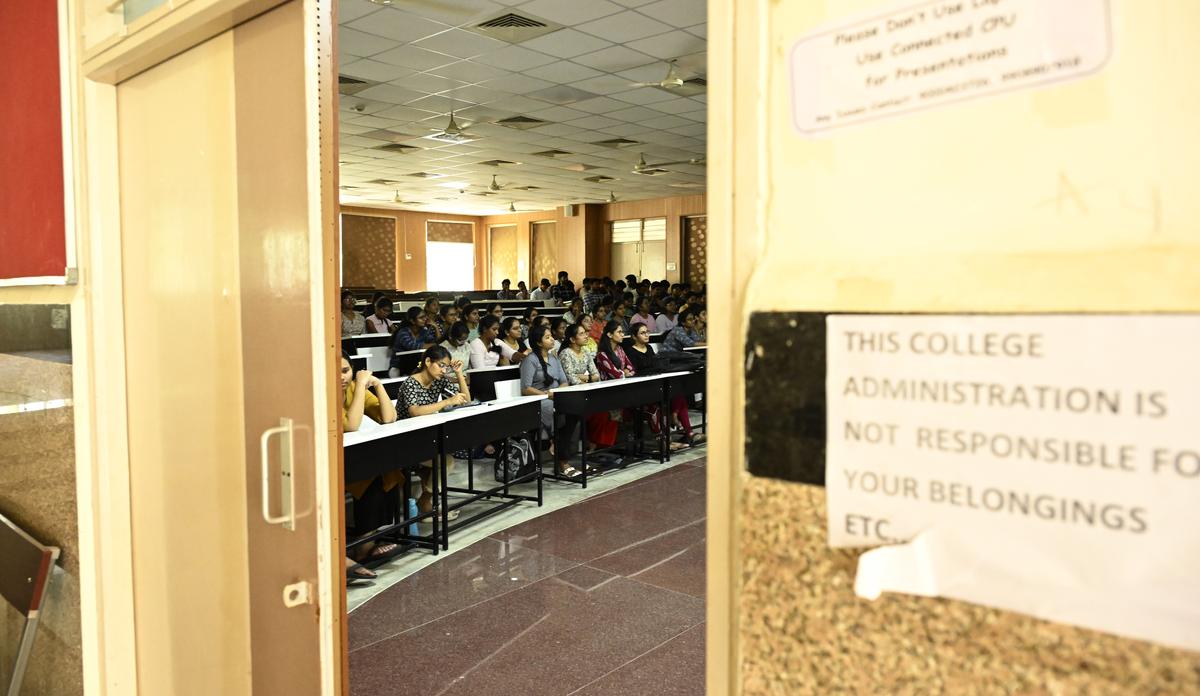
MBBS students attending a class at Government Medical College, Siddipet.
| Photo Credit:
RAMAKRISHNA G.
The doctor warns that the system is nearing a breaking point: “Morale is low. Many are wondering how long they can go on without pay or clarity about their future. Some are seriously considering quitting altogether.”
Another doctor points to repeated delays. “Regular recruitment was promised last year. But after the SC sub-division notification came out, everything was put on hold. Even after receiving Cabinet clearance, officials keep saying the notification will come ‘next week’. It has been over two months and nothing has moved.”
Fixing the cracks
Meanwhile, in response to the NMC’s show-cause notice, the Telangana government has set up 10 Medical College Monitoring Committees to conduct field inspections and comprehensive assessments of all 34 GMCs and their affiliated teaching hospitals across the State. The move was formalised through a Government Order issued by Health Secretary Christina Z. Chongthu on June 19.
The GO states that the aim is to develop a detailed action plan to ensure full compliance with NMC standards by June 2028. The committees are tasked with identifying on-ground challenges and recommending institution-specific, sustainable solutions.
Each committee includes officials such as district collectors, medical college principals and hospital superintendents. Their mandate covers a wide spectrum — from infrastructure and lab facilities to the availability of medical equipment, hostel conditions and academic spaces. They will also evaluate the clinical workload, including functioning of in-patient wards, operating theatres, diagnostics and emergency services.
Staffing gaps, both teaching and non-teaching, will be mapped and recommendations made for recruitment through Medical and Health Services Recruitment Board, Telangana State Public Service Commission or local contractual appointments overseen by district administrations.
The committees have also been asked to assess hostel safety, sanitation, food quality and the presence of support systems like anti-ragging mechanisms, grievance redressal cells and counselling services. Operational issues such as supply of essential drugs, food provisions, infection control and utility expenses are also under review.
The functioning of systems such as the electronic Health Management Information System, biometric and facial recognition attendance, and CCTV surveillance — both academic and clinical — will be audited. The committees are expected to submit detailed field reports by June 30.
Whether these committees will spark lasting reform or simply become another bureaucratic ritual remains to be seen. For now, thousands of young doctors continue to study, serve and survive in conditions far removed from the promises once made to them. In Telangana’s grand medical expansion, it is not the buildings but the people inside them who are being tested the most.



